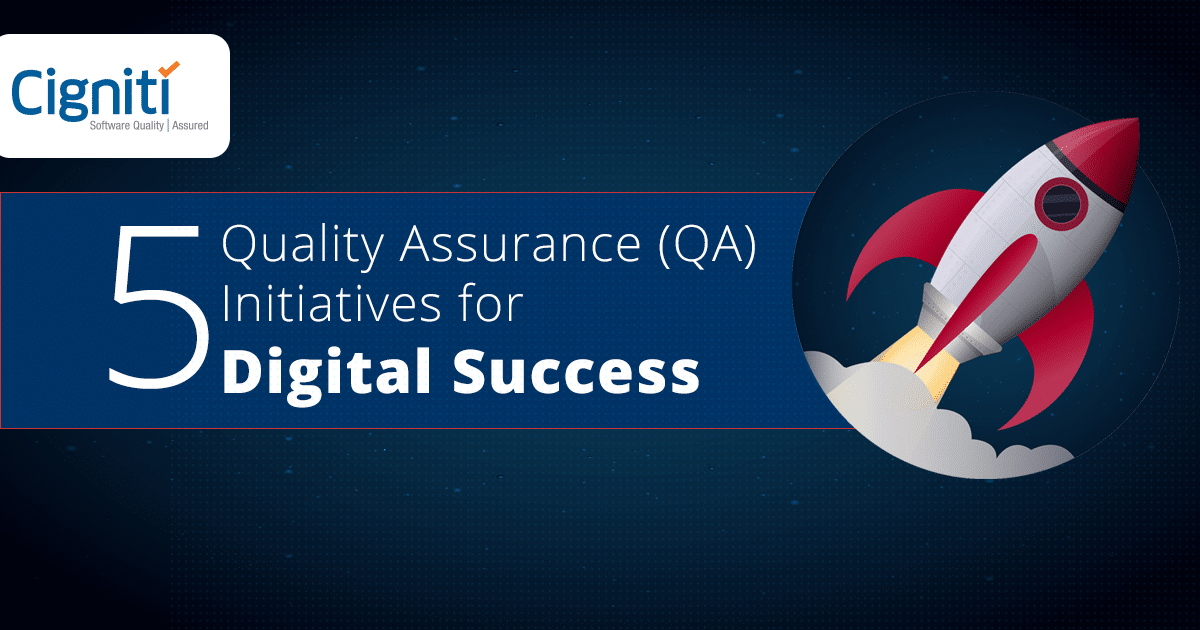QA is the way to success for digital utilities
The utilities sector is the most vulnerable to disruption, as well as the most likely to cause disruption.
In the event of a natural disaster or calamity, the destruction of utilities’ infrastructure is typically the cause of significant chaos as daily life comes to a halt.
The impact of the energy transition, as well as the upheaval caused by the global pandemic, are laying the groundwork for a distinct and new business and operating environment for utilities.
The industry, which has traditionally been known for its business stability, dependability, and predictability, is now undergoing a decade-long deep redesign that affects every aspect of the business.
Regulatory frameworks, business and operating models are evolving, necessitating the development of new ways of thinking, skills, and capabilities by utilities.
New energy technologies are emerging at both the utility and grid edge levels, forcing utilities to reconsider their business strategies.
Simultaneously, these technologies are influencing consumer behavior and altering consumption patterns.
Utilities are under pressure to improve resilience while maintaining productivity and efficiency.
They are forced to shape-shift quickly in order to adapt to the new realities. They must do so in order to survive disruptions and capitalize on opportunities created by a decade of deep redesign.
And all of this is taking place during a pandemic, when service continuity is critical, giving new meaning to operational resilience.
As a utility technology leader, you must confidently shape your organization’s future in the face of unprecedented turbulence — a future that necessitates your organization’s ability to be both agile and resilient.
This is where utility trends for 2021 come into play.
Top trends driving the Utility Industry in 2021
As a utility transitions from responding to disruptions caused by the energy transition and COVID-19 to seizing possibilities and generating development, it must concentrate on three areas that form the themes of the top utility trends for 2021:
Technology: On the supplier side, new forms of energy resources that are less harmful to the environment, such as hydrogen, and on the consumer side, new sorts of demand, such as electric transportation, are emphasized in the worldwide drive toward sustainability.
These new technologies are having an influence on the old delivery infrastructure, diminishing controllability and reliability, and increasing total company instability as a result.
They also put traditional commodity provisioning under strain, requiring the creation of new business and operating models, with ramifications for utility IT and OT systems.
Delivery: This topic isn’t about making a quick adjustment or “recovering” from a pandemic; it’s about being able to adapt quickly in a constantly changing corporate environment.
The underlying premise behind resilient delivery is that utility industry instability will continue. As a result, it’s critical to have the talent, competencies, techniques, operational procedures, architecture, tools, and applications in place to adapt to changing business patterns on a continuous and dynamic basis during a long period of change.
This necessitates the use of modular, adaptable, and self-contained components in organizations.
To achieve long-term resilience, they must employ technologies and leverage technology domain integration. When it comes to work and asset operations, business and IT procedures must be automated – and, in particular, digitalized.
IT Competences: This issue focuses on how information technology may help with energy transition and pandemic-related concerns and opportunities.
To have a thorough grasp of the business and operational environment, as well as the ability to predict and adapt to change, timely insight into the operating parameters of essential assets or business processes is required.
Using Internet of Things (IoT) data and turning it into actionable knowledge through sophisticated analytics is a clear example of IT’s contribution to operational resilience and agility (AA).
Artificial intelligence (AI) models and orchestration platforms can help discover complicated operational patterns, predict faults, and take corrective action before they happen.
Trends and technologies do not live in a vacuum; they interact and build on one another. Trends can merge into combinatorial innovation to form a whole that is larger than the sum of its parts.
The trends can also reinforce one another, resulting in a business and technological foundation that is adaptive and robust. Trends can sometimes collide in unanticipated ways, resulting in a mash-up of issues and possibilities that must be assessed and addressed.
This is the underlying subject of the significance of spotting and evaluating trends, as they are a predictor of the future structure and character of the energy and utilities industry.
Over the years, the industry has focused on developing innovative solutions to increase customer resilience and reliability. And the transition to digital transformation is yet another step in the right direction.
Transition to Digital Transformation
Digital utilities have three focus areas – customer channels, the delivery of new services, and the role of digital in disrupting business models – with data, organizational governance, and culture & change management also playing a key role.
By leveraging digital opportunities, the utilities sector is not only ensuring uninterrupted service to its customers, but also optimizing its own value chain through improved productivity and efficiency.
As per a McKinsey estimate, digital optimization in the utilities industry can boost profitability by 20 to 30 percent with optimized plant maintenance, spare-parts management, fuel management, improved decision making, preventive and predictive maintenance, and better operations and management through enterprise resource planning.
The unpredictability of the sector is the biggest threat to the utilitiy service providers.
With constantly updated government policies and regulations, and changing prices, industry leaders need to constantly be on their toes to ensure the best outcome for all the stakeholders involved.
Digital utilities companies are employing smart meters and smart grids, digital productivity tools for employees, and automation of back-office processes to tackle the risks and threats prevalent in the industry, while also facilitating the delivery of seamless services to customers.
This requires them to be updated with any and every change in real time and have the capability to analyze real-time data for effective decision making.
In addition to leveling up the grid infrastructure, digital utility companies are investing in digitizing their back-office processes like billing, invoice management, service tracking, and account management for higher agility and productivity.
To efficiently keep track of such a large scale of activities, they need a robust application that is capable of scaling on demand and performing under high load conditions.
While digital utilities companies are driving innovation as a core practice for serving their customers better, they need the support of software quality assurance practices to ascertain that their digital efforts produce the desired outcomes.
Although digital innovation is opening new avenues for the E&U businesses at multiple levels, software testing of utilities applications keeps a check at the ground level to make sure that applications are well-functioning and well-performing in all aspects.
How QA aids in the digital initiatives of the utilities industry
Utility companies are fully aware that information technology is critical to their growth and success. Technical expertise is necessary to meet the industry’s changing standards and to stay ahead of the competition.
Consider the utilities sector’s product engineering space: businesses must reduce and adapt to the complete product lifecycle.
This means that software quality assurance services must be employed at every level of the manufacturing process to guarantee that the product quality meets expectations.
Quality assurance is an important part of the total product lifecycle, starting with the development and implementation of new utility goods or software.
Software quality testing enables businesses to create architectures and begin development work. Companies will be able to construct performance-driven applications and software products as a result of this.
Additionally, because the architecture creation and planning activity is essentially validated by regular testing and QA procedures, firms can deal with chronic organizational issues.
Furthermore, such methods enable businesses to adhere to regulatory requirements and policies.
Mobile applications and websites have become the norm of worldwide opportunity for businesses in the current global landscape.
Companies are always changing in order to provide new online experiences. The goal of this project is to establish a positive brand image.
As a result, digital solutions are now required in all economic sectors, not only the utility sector.
Quality assurance services are critical in the development of trustworthy software. Utility firms can’t keep customers interested if they don’t have quality assurance.
Even if a utility company does not sell a software-based commodity, such as telecommunications, they will still need to construct a consumer-facing application or website because that is the industry standard.
They will be constantly performing performance testing, usability testing, response testing, and other similar activities to achieve this aim.
Examples of how QA supports the digital initiatives of the utilities industry
Cloud performance testing ensures concurrent user scalability for a leading provider of home heating & comfort systems
A leading provider of home heating and comfort systems with top-of-the-line HVAC systems, furnaces, and air conditioners wanted to ensure the best performance for all their products and client-facing applications.
As these applications connected all the company’s stakeholders and attracted a lot of activity, the provider wanted to test the performance of the system at 50,000 concurrent users in an application environment built on SQL and IIS. They required a robust and low-cost load generation environment as well as a formal process that would help them identify performance bottlenecks and correlate the test results with production data.
By implementing a cloud-enabled load generation strategy and a robust & maintainable performance test automation framework, the client was able to achieve:
- 25% improvement in hardware performance
- 20% optimization of server performance and concurrent user scalability
- 30% improvement in server response time
- Reduction in overall performance testing costs
Read the complete success story here
The proprietary test automation framework improved test coverage across modules for the largest independent supplier of energy & materials handling services
One of the largest independent suppliers of energy & materials handling services in the Northeast and Mid-Atlantic regions of the US wanted to automate the testing processes across all the modules of their applications.
As there was no pre-defined test automation process or framework in place, the frequent changes and updates in requirements caused severe data validation challenges. The company was following an Agile development model and needed support to counter the crunch of QA resources in their in-house team for performing test automation on their complex legacy application.
After standardizing their test processes with the implementation of a test automation framework, checklists, guidelines, best practices, and reusable templates, the supplier could realize the benefits of:
- 60% improvement in automation coverage across the application modules
- 30% reduction in test execution time
- 75% reduction in test efforts with test automation
- 50% improvement in application quality through proactive testing
Read the complete success story here
How can we help
At Cigniti, we understand the testing needs of the Energy & Utilities landscape that is undergoing a massive transformation from existing systems to better ways of consumption, production, and distribution. Having delivered comprehensive testing services to E&U organizations in the US, UK, and Europe, we provide complete test coverage, test acceleration, and tool agnostic test frameworks.
With capabilities that enrich QA initiatives across change management, compliance programs, and executive monitoring, our services strengthen the global E&U ecosystems with precision and high standards of QA to overcome business concerns across production, transport, distribution, consumption measurement, and billing.
Cigniti’s E&U CoE incorporates the multiple benefits of its other CoEs, such as those for Performance, Security, Automation, ERP, & Mobile CoE, to offer a complete QA solution to you.
Connect with our Energy and Utilities software solutions testing experts today to resolve your QA needs.





Leave a Reply